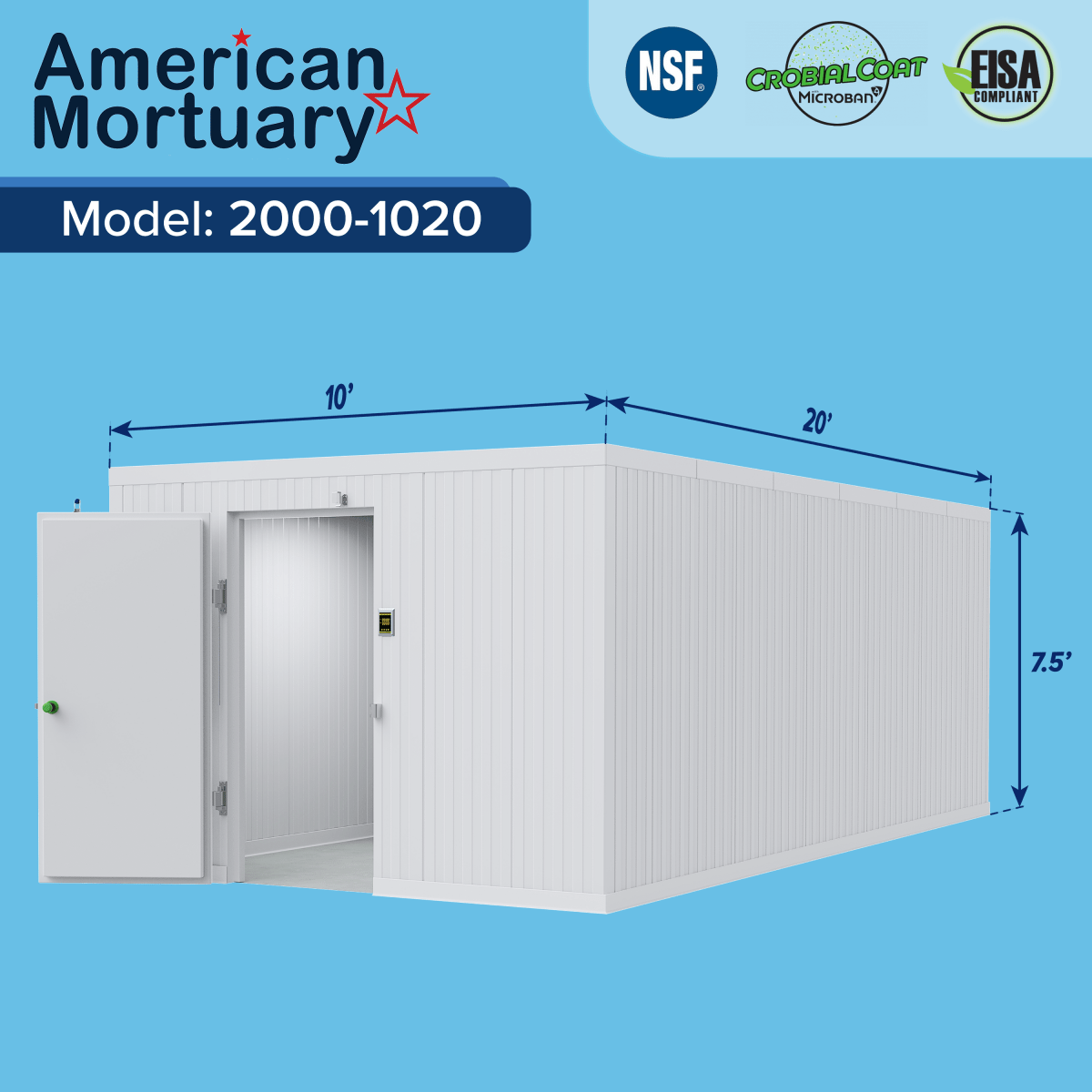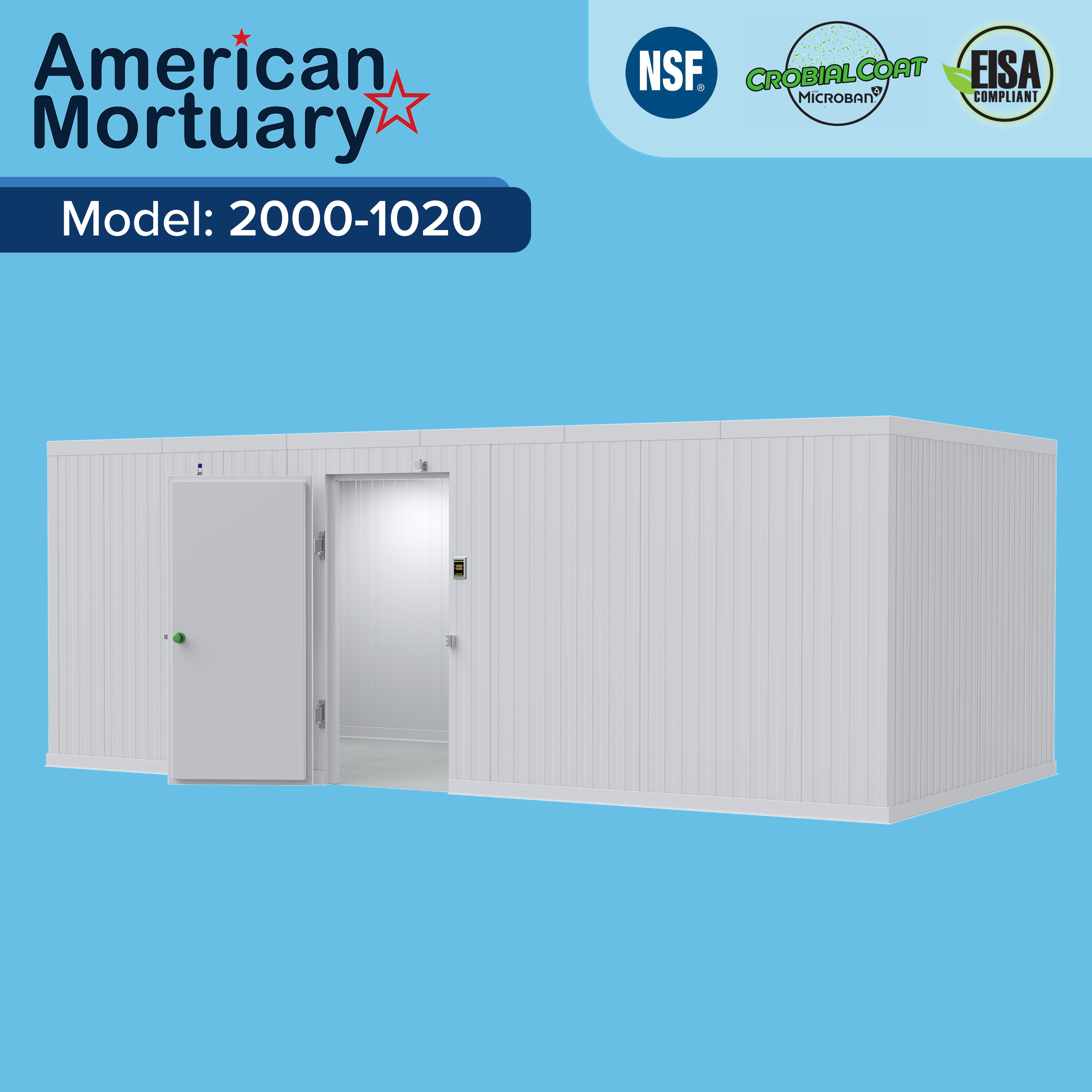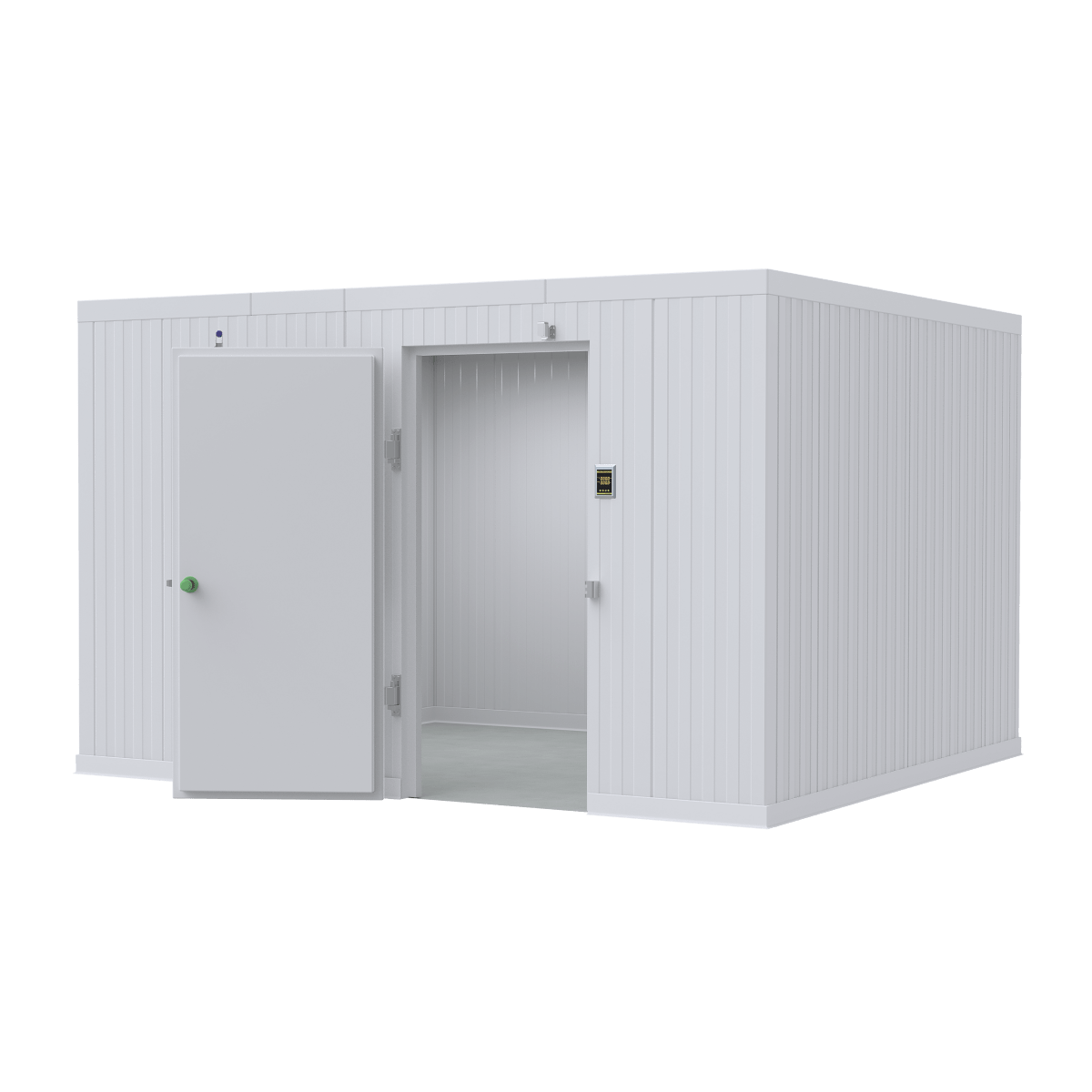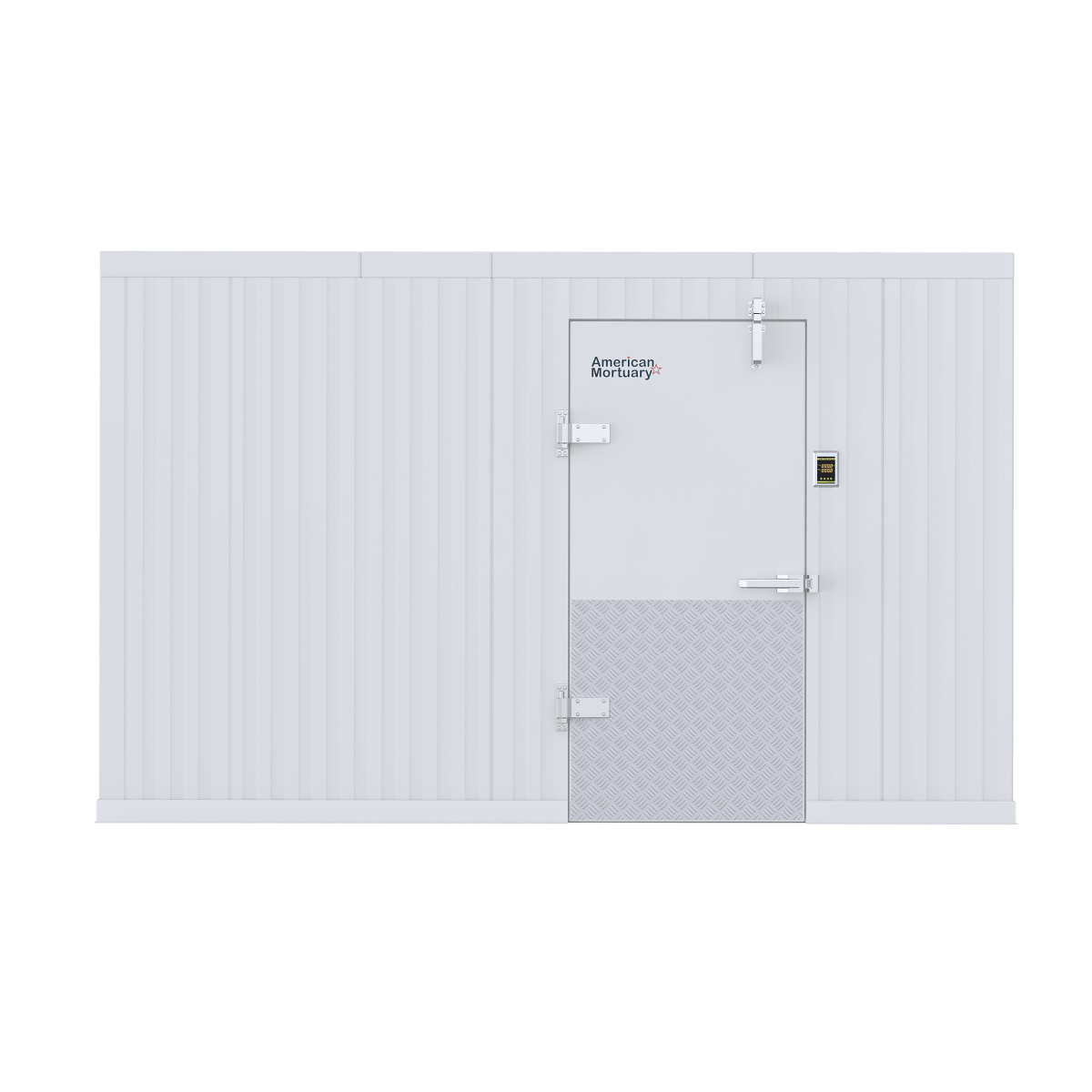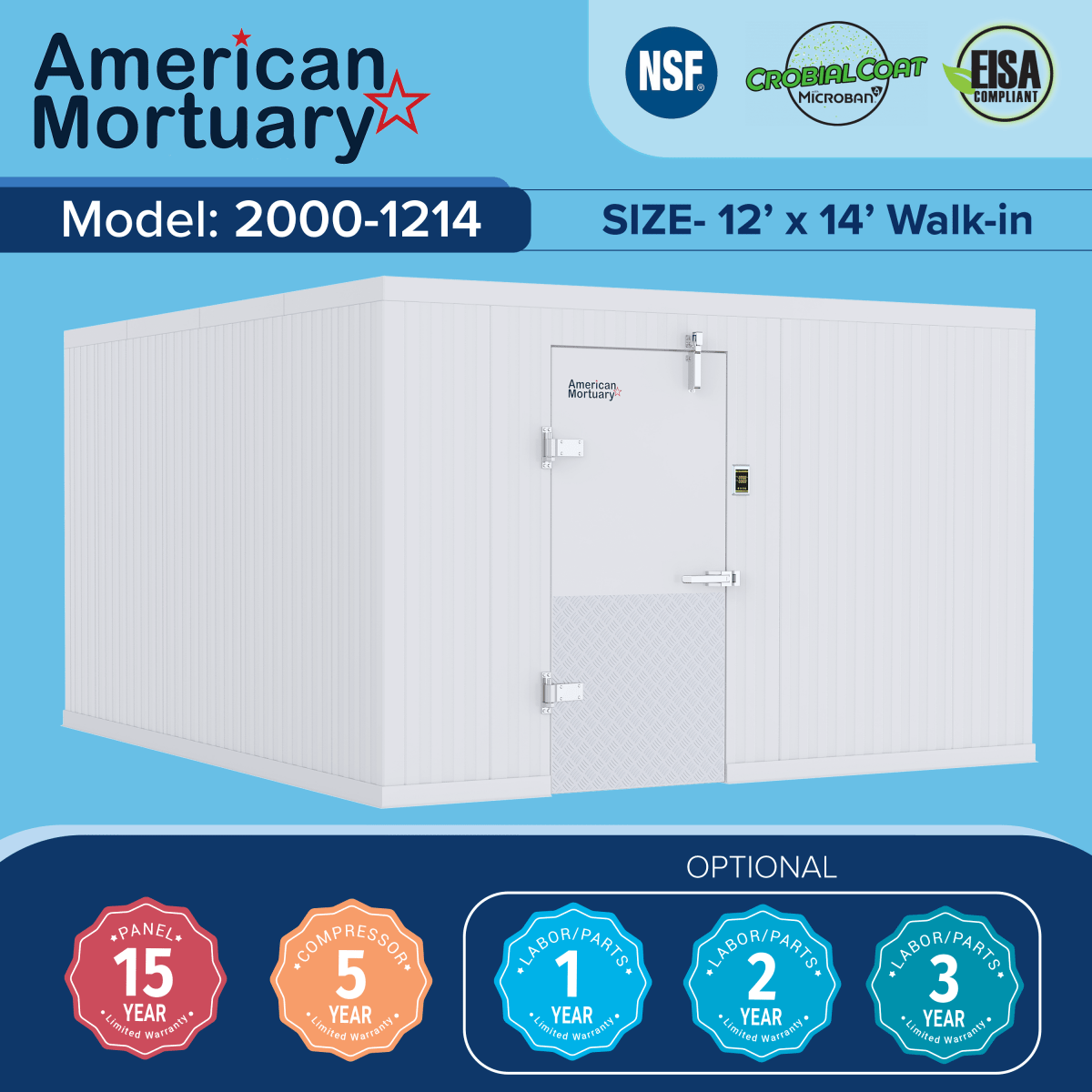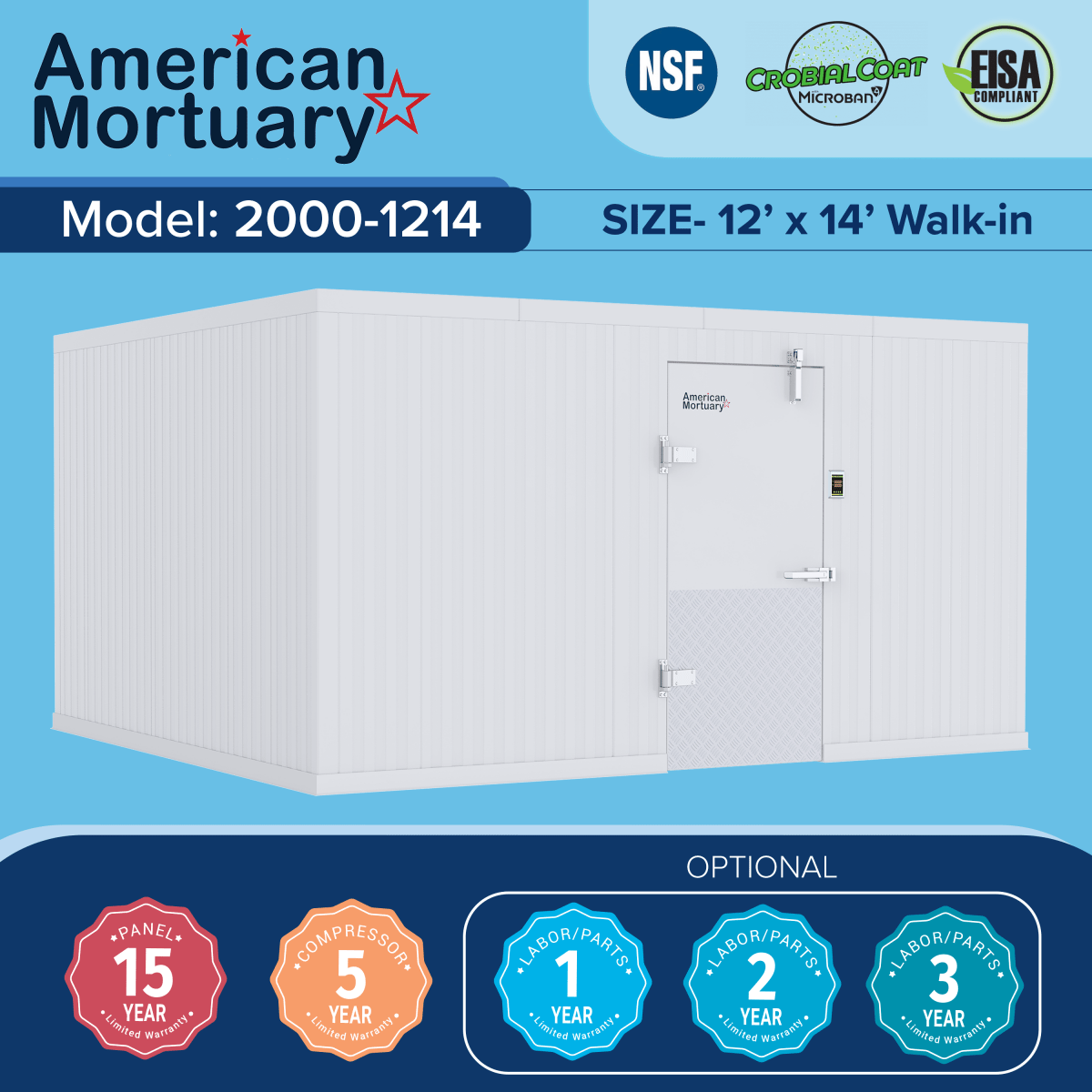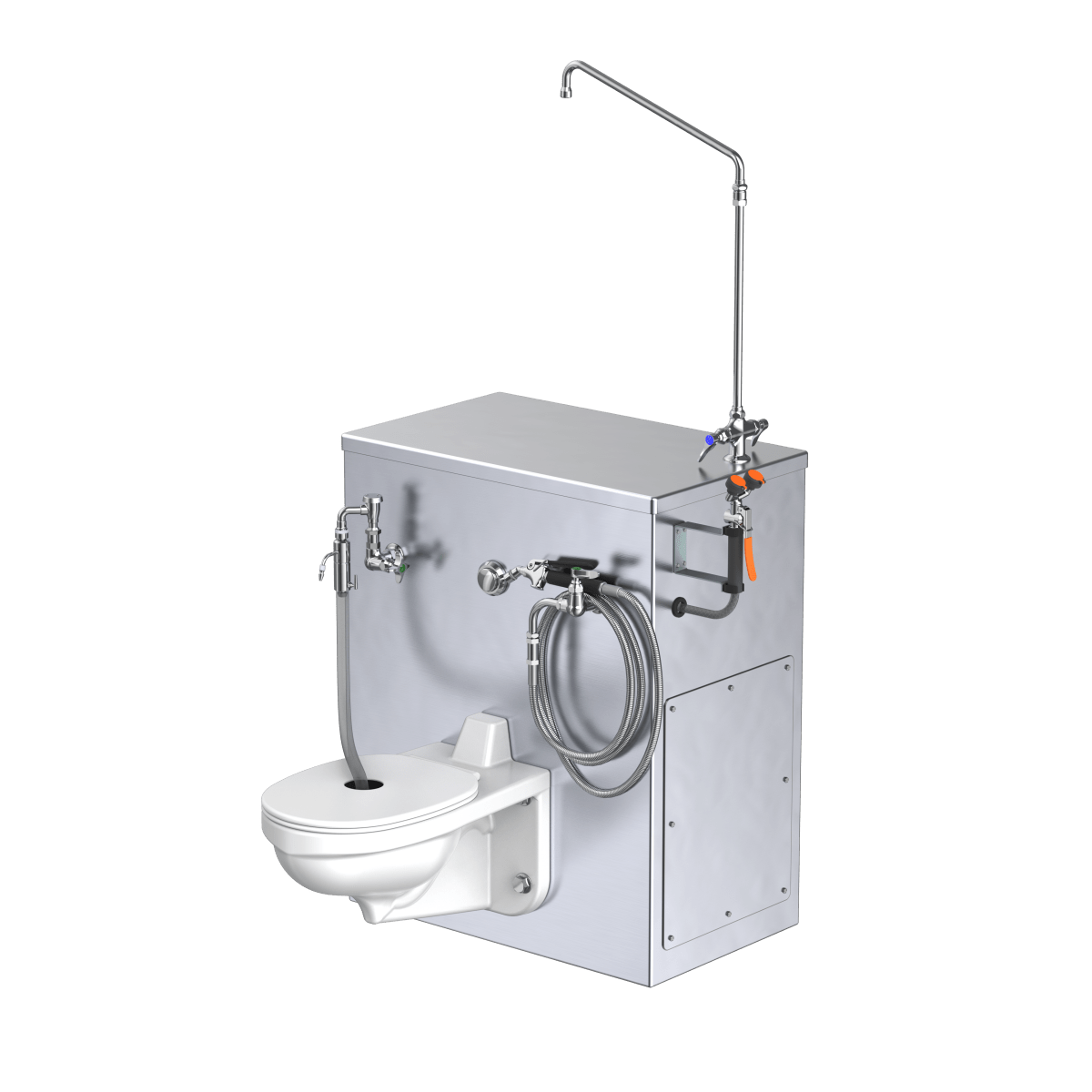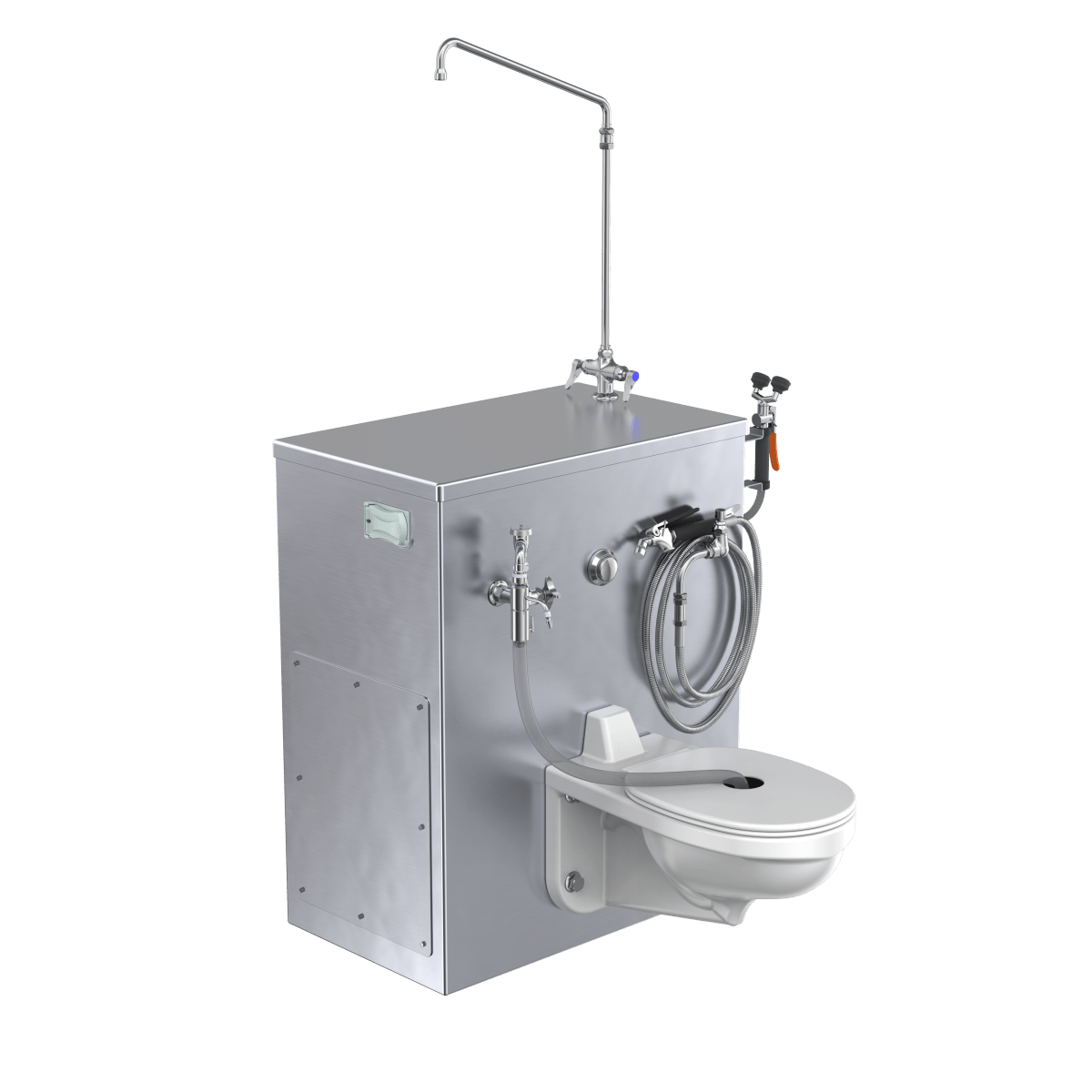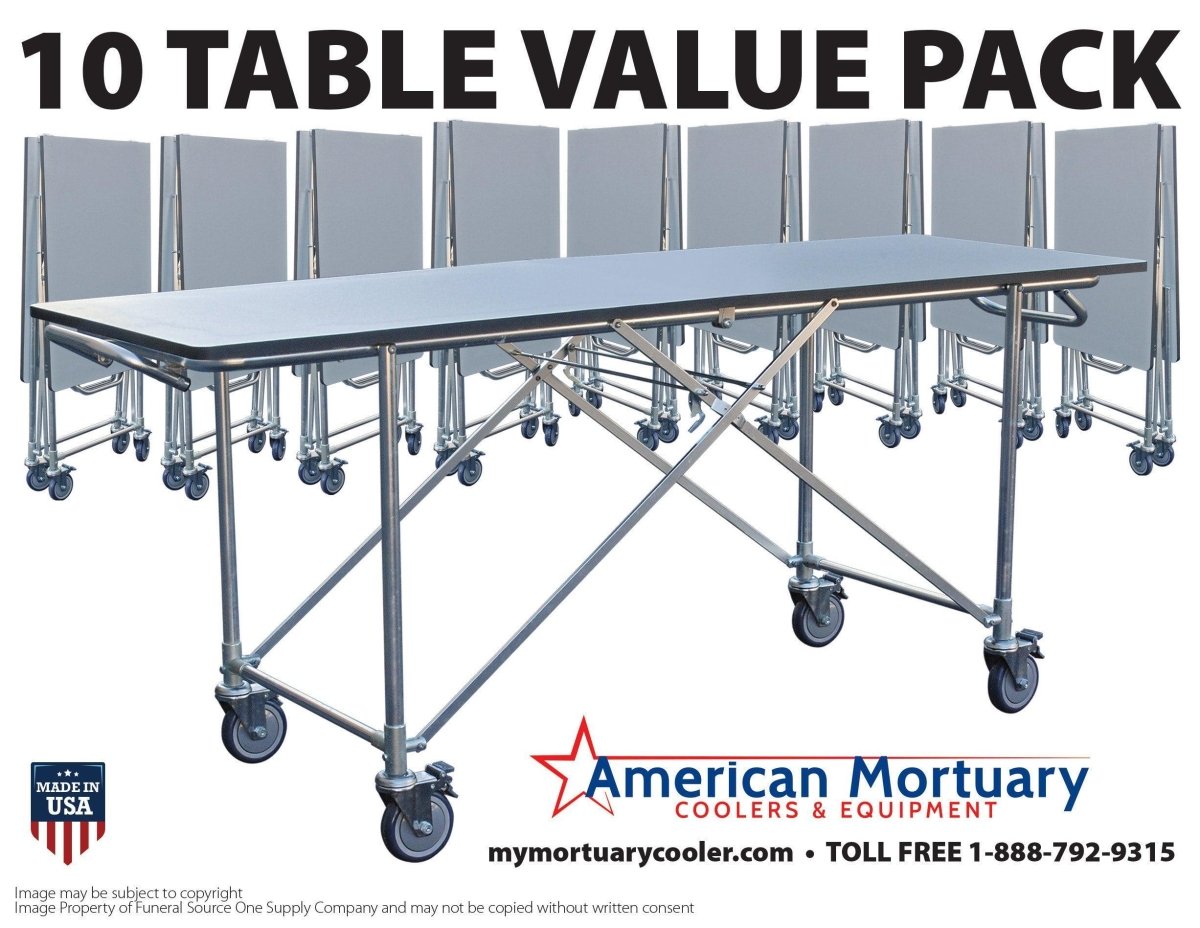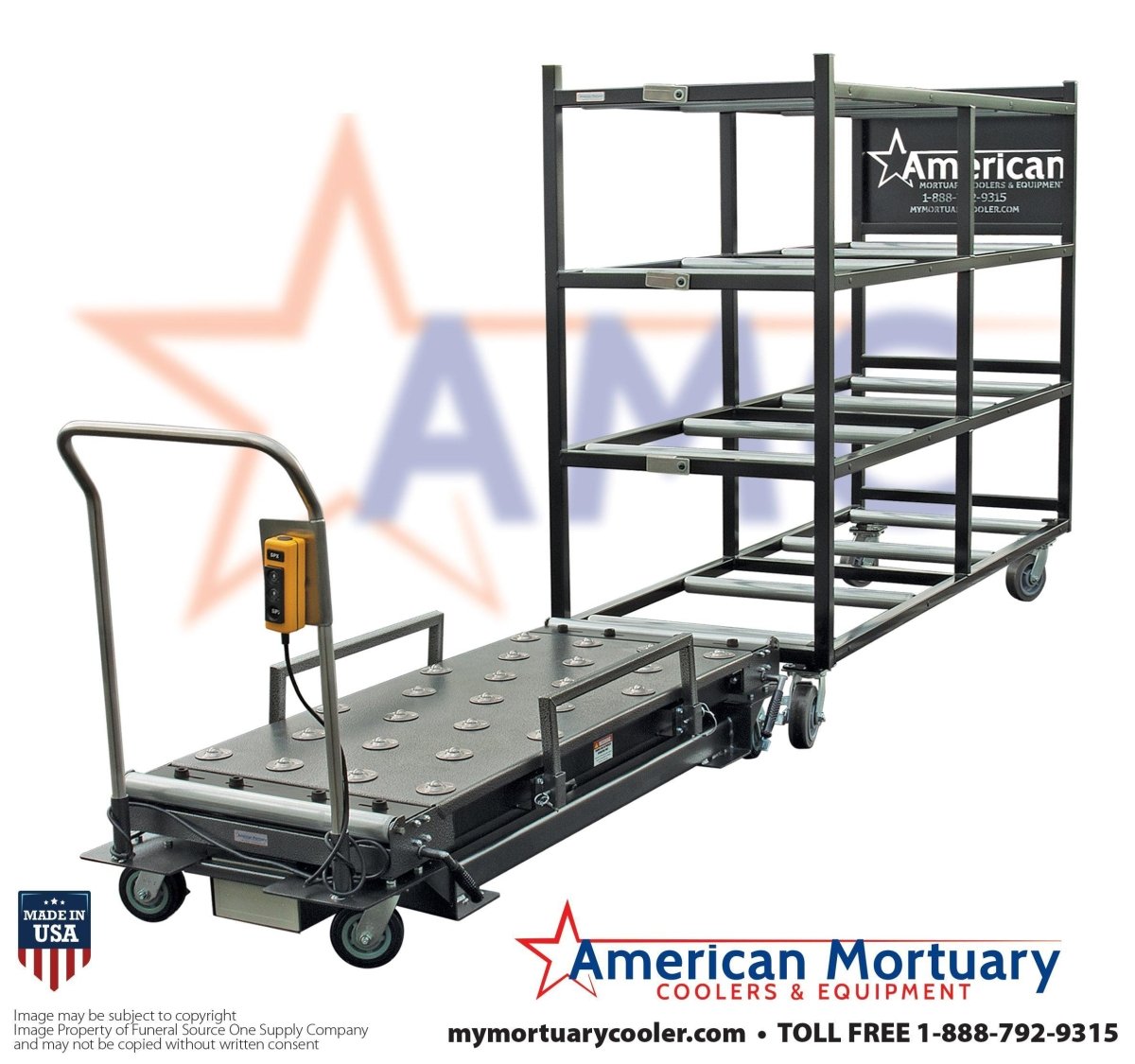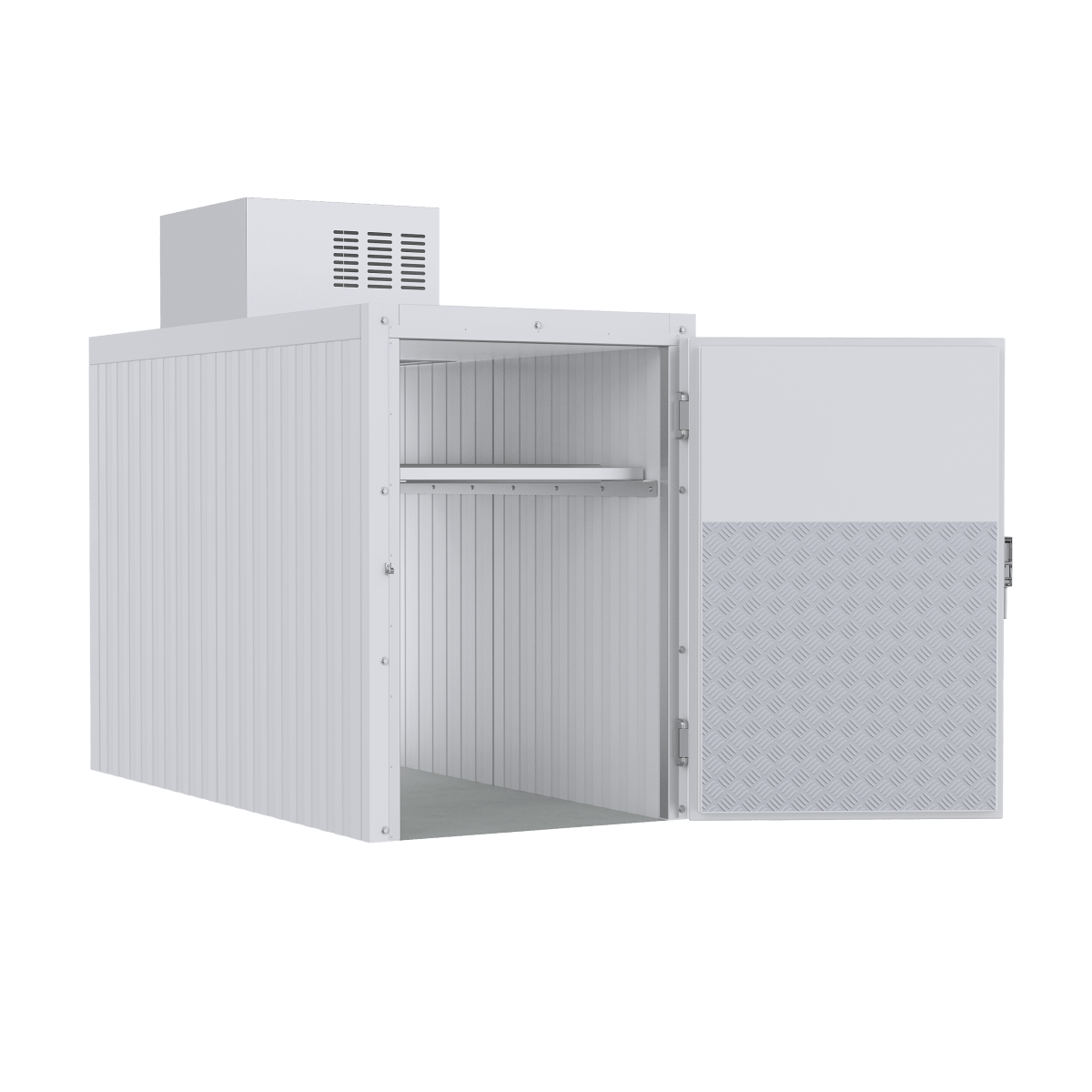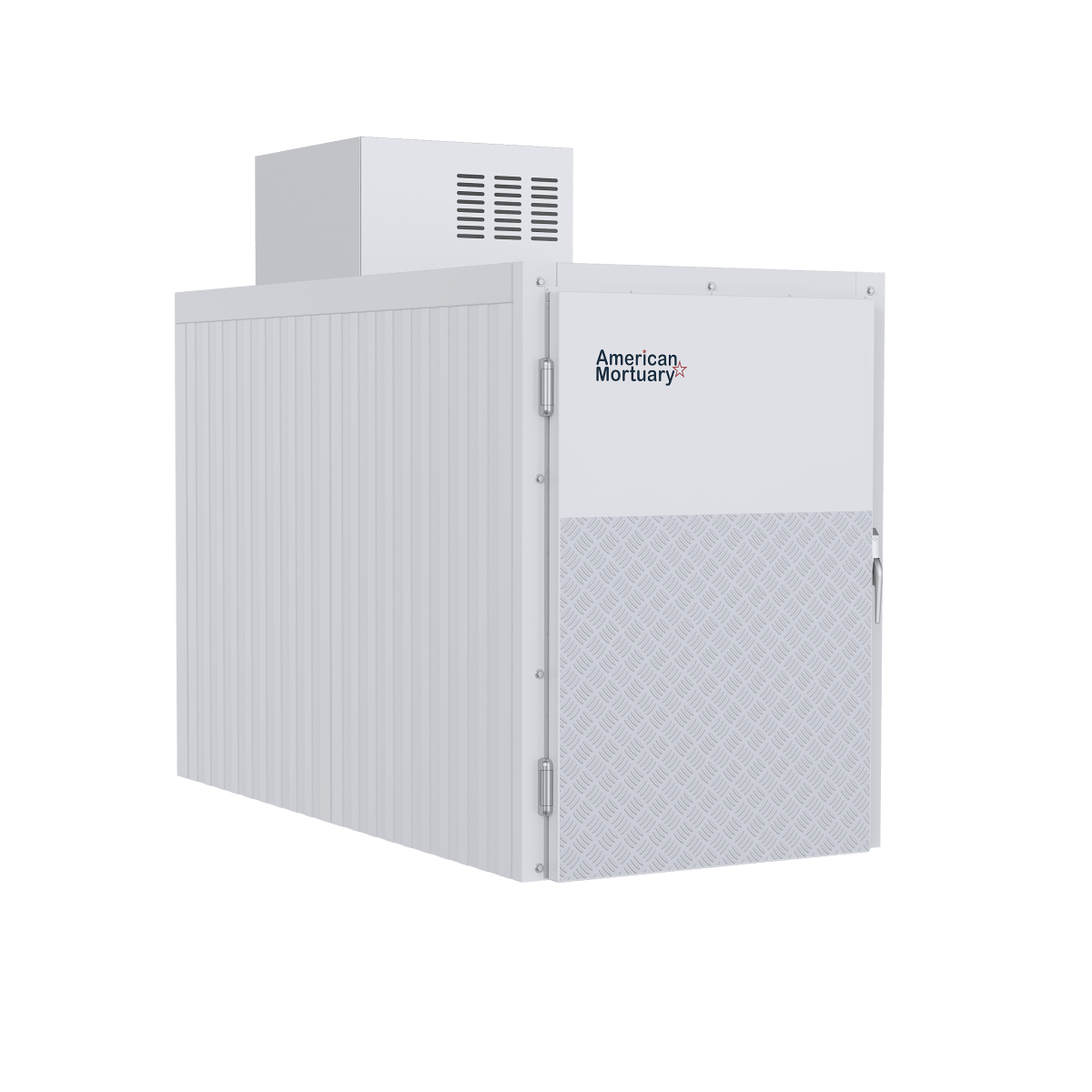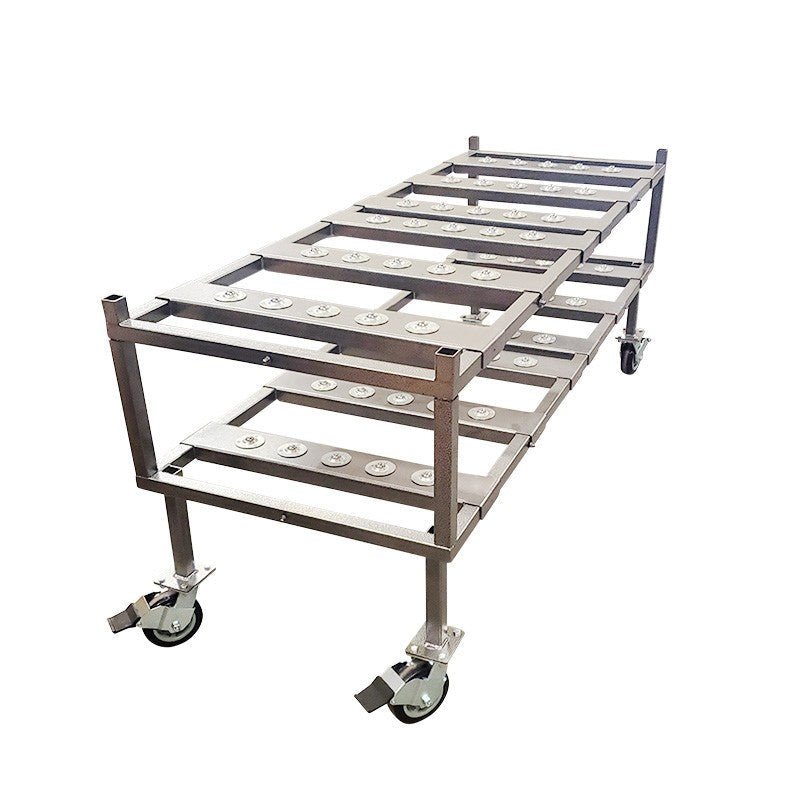The Future of Sustainable Death Care
Human composting www.funeralcoolers.com offers funeral home directors a alternative to traditional burial and cremation services. This emerging option transforms human remains into nutrient-rich soil through a natural process that honors both the deceased and the environment.
Quick Answer: Human Composting Options for Funeral Directors
| Key Information | Details |
|---|---|
| Process Time | 8-12 weeks (30-45 days for change, 3-5 weeks for curing) |
| Legal Status | Available in 12 states: WA, OR, CO, VT, NY, NV, CA, ME, MN, MD, DE, AZ |
| Average Cost | $5,000-$7,000 (vs. $8,300 for traditional burial) |
| Environmental Impact | Saves 1 metric ton of carbon; uses 87% less energy than burial/cremation |
| Soil Produced | One cubic yard (enough for 100 sq ft at 3" depth) |
| Required Equipment | Specialized composting vessels, storage coolers, monitoring systems |
The growing demand for green funeral options has created new opportunities for funeral homes to expand their services. Unlike cremation, which emits over 600 pounds of CO₂ per body (equivalent to driving over 600 miles), human composting is carbon neutral and powered by renewable energy.
For funeral directors, implementing human composting services requires proper facility planning and equipment, including specialized mortuary coolers that maintain optimal temperatures for body preservation before the composting process begins.
I'm Mortuary Cooler, a national-level supplier of mortuary coolers and refrigeration solutions specializing in equipment that supports human composting www.funeralcoolers.com operations across the United States. My expertise includes helping funeral directors select and implement the right cooling systems that complement sustainable death care practices.
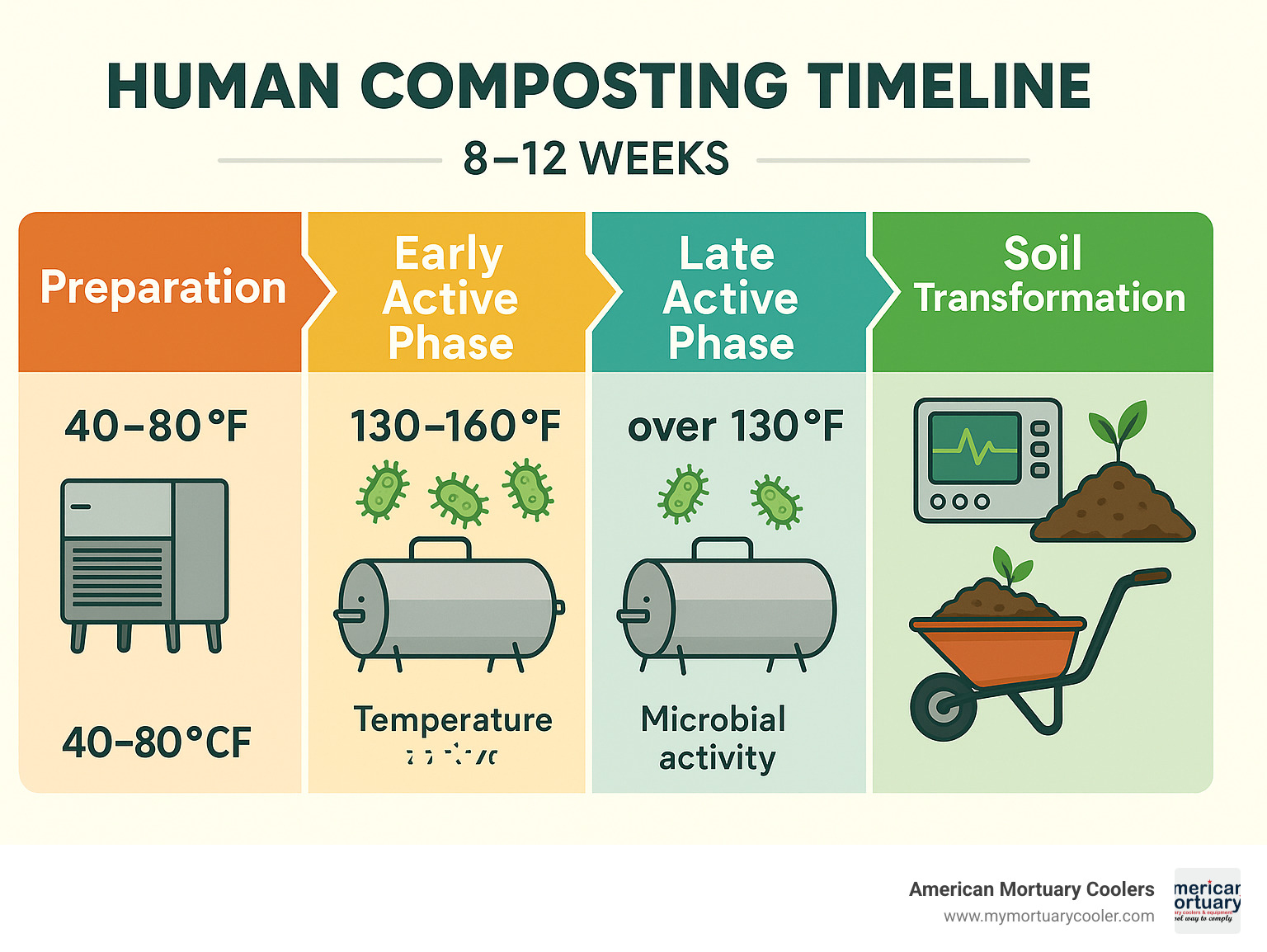
Common human composting www.funeralcoolers.com vocab:
Human Composting www.funeralcoolers.com: What You Need to Know
When you walk through a forest, beneath your feet lies nature's most perfect recycling system. This same beautiful process now offers a meaningful alternative for our final journey. Human composting www.funeralcoolers.com – also called natural organic reduction or terramation – transforms our bodies into life-giving soil, completing the circle of life in the most natural way possible.

The Science Behind the Process
Mother Nature has perfected decomposition over billions of years, and human composting www.funeralcoolers.com simply creates the ideal conditions for this natural magic to happen. Think of it as nature's recipe – a perfect balance of ingredients working together:
The body provides nitrogen, while wood chips and straw add carbon. Careful aeration ensures oxygen flow, moisture levels are monitored closely, and temperatures are maintained to create the perfect environment for helpful microbes to thrive.
As one provider, Recompose, beautifully explains: "The process uses natural principles of nutrient cycling to transform bodies into soil. What's happening is essentially an accelerated version of the natural process that transforms fallen trees and leaves into rich forest floor."
The Timeline: From Body to Soil
The journey from body to soil takes about 8-12 weeks, unfolding in two main chapters:
During the first 30-45 days of active decomposition, the body rests in a special vessel surrounded by organic materials. Billions of microbes – nature's tiny decomposers – go to work breaking down tissues while temperatures reach at least 131°F for three consecutive days, ensuring everything is safely processed.
Then comes a 3-5 week curing period, where the material gently continues changing, becoming stable, rich soil full of nutrients – ready to nourish new life.
Body Preparation Checklist
Preparing for human composting www.funeralcoolers.com involves a thoughtful, simple process. The body remains free from embalming chemicals, which would harm the beneficial microbes. Any metal implants like pacemakers or artificial joints are carefully removed.
The person is wrapped in a soft, biodegradable shroud – often with wildflowers or meaningful plants added. Personal items like rings are removed unless they're biodegradable, and then the body is gently placed in the vessel with wood chips and mulch to begin its change.
The Final Product
Each person's journey through human composting www.funeralcoolers.com creates approximately one cubic yard of soil – enough to cover a 100-square-foot garden at three inches deep. This 500-1,000+ pound gift to the earth has a perfect pH between 6.5 and 7, ideal for most plants.
The soil contains balanced nutrients and tests show it's "Very Stable" in respiration tests – meaning it's mature and ready to nurture new growth. As one family member described it, the soil feels "earthy, beautiful, vibrant, and life-giving."
For funeral homes looking to offer this meaningful option, proper equipment is essential – particularly the right mortuary coolers for body preservation before the process begins. This is where American Mortuary Coolers provides crucial expertise, helping facilities implement this earth-friendly alternative with dignity and care.
American Mortuary Coolers – Supporting Human Composting Facilities
If you're a funeral home looking to add human composting www.funeralcoolers.com services to your offerings, you'll need the right equipment to get started. That's where we come in. At American Mortuary Coolers, we've become specialists in creating the perfect refrigeration systems to support this earth-friendly approach to death care.
The Critical Role of Mortuary Coolers
Before a body begins its journey to becoming soil, proper preservation is essential. Our mortuary coolers maintain the ideal temperature of 37-38°F, keeping the body in its natural state without chemical embalming. This crucial first step ensures everything is ready when it's time for the composting process to begin.
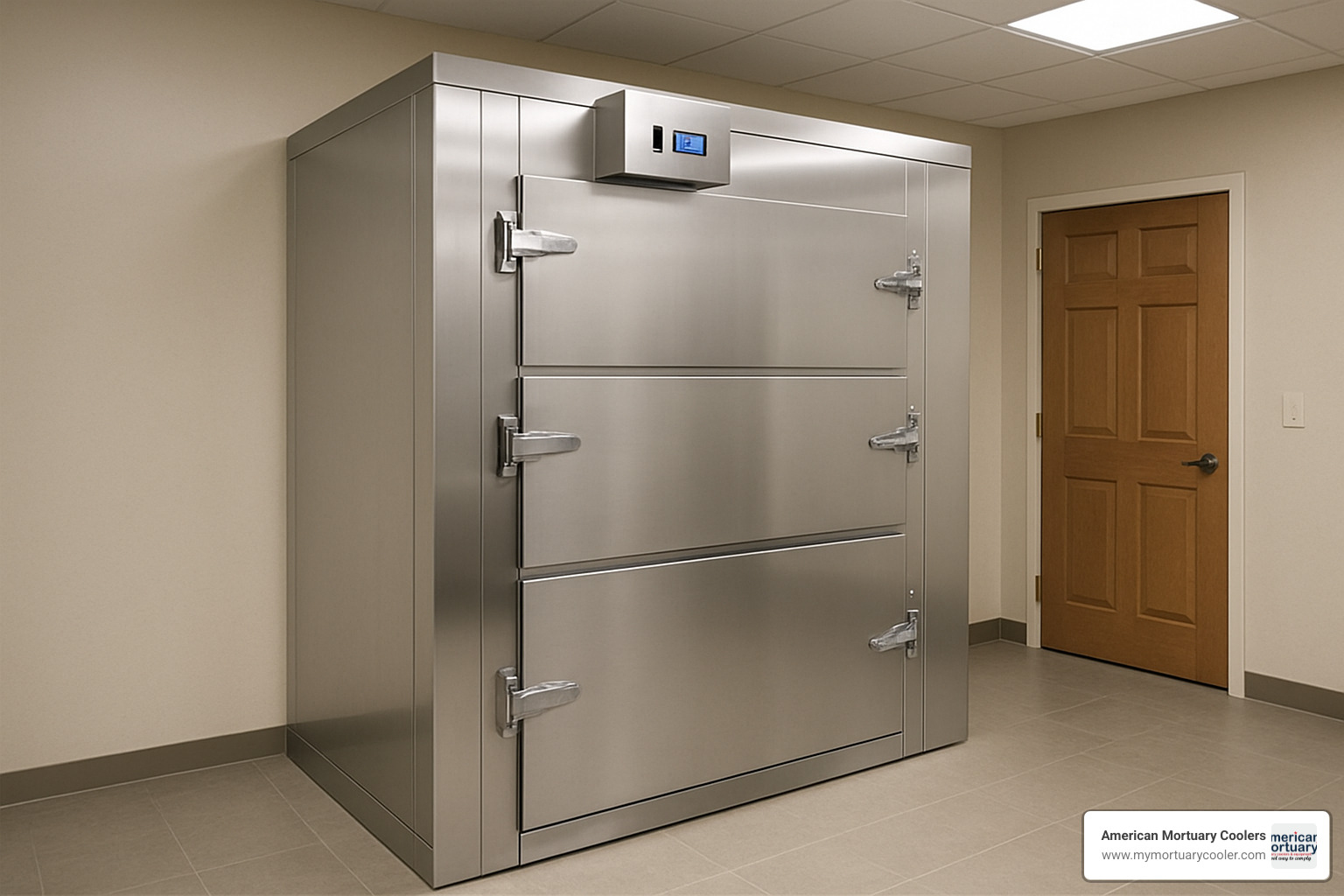
"We installed an American Mortuary Cooler last year when we expanded into human composting," shares one Oregon funeral director. "The system works beautifully, and their team really understood our specific needs. They weren't just selling us a cooler – they were helping us build a sustainable death care practice."
CoolBot Integration: A Cost-Effective Solution
Not ready for a full-scale investment? Our CoolBot retrofit options are perfect for smaller funeral homes dipping their toes into the human composting space. This clever technology transforms standard air conditioners into powerful cooling systems for mortuary use.
One of our customers in Southern California found an affordable way to get started: "Using an 8'x12' CoolBot cooler built for about $5K, we can store remains for up to 25 people. It's been a game changer for our business as we transition to offering more sustainable options."
The CoolBot system gives you several advantages: lower upfront costs than traditional compressor systems, reduced electricity bills, fewer maintenance headaches, and even remote temperature monitoring via WiFi. It's a smart solution that grows with your business.
Custom Builds for Every Facility
From Tennessee to your doorstep, we deliver our custom-built coolers across all 48 contiguous states. Whether you need a compact unit for a small urban funeral home or a larger system for a dedicated composting facility, we build it to your specifications.
Our walk-in coolers come in various configurations (2-body, 3-body, 4-body), with customizable dimensions to fit your existing space. We also provide specialized racks and body lifts for safe handling, side-opening options for easier access, and accessories like casters, locking handles, and alarm systems to complete your setup.
Every unit we build uses UL-NSF approved, high-density insulated panels that comply with ASTM E84 smoke and flame spread testing and the Federal Energy Independence & Security Act (EISA). Quality and compliance are built into everything we make.
For more detailed information about equipment needs for human composting facilities, check out our comprehensive guide: Human Composting: Mortuary Coolers, Racks, Lifts & 12 States.
How Mortuary Coolers Enable Sustainable Death Care
The journey to offering human composting www.funeralcoolers.com services isn't just about embracing a new philosophy—it requires thoughtful planning and the right equipment. Mortuary coolers serve as the crucial bridge between traditional funeral practices and this earth-friendly approach to death care.
Body Storage Best Practices
When it comes to human composting, how you store the body makes all the difference in the process that follows.
Keeping a consistent temperature of 37-38°F is absolutely essential. This sweet spot prevents unwanted decomposition while preserving the body's natural microbiome—those helpful microorganisms that will later jumpstart the composting process. Think of it as setting the stage for nature to do its work perfectly.
Humidity matters too. Too dry, and the tissues become dehydrated, which can slow down the beautiful change that's about to take place. Our coolers maintain that perfect balance, creating the ideal environment for what comes next.
Unlike traditional approaches, bodies headed for composting should never meet embalming chemicals. As one Oregon funeral director put it: "It's about working with nature, not against it. Those chemicals would be like throwing weed killer into a garden—they'd harm all the beneficial microbes that make composting possible."
Workflow Efficiency in Human Composting Facilities
At American Mortuary Coolers, we design systems that make your daily operations smoother and more dignified:
"The layout of our facility completely transformed when we rethought the placement of our cooling systems," shares a Washington state composting provider. "Now, our coolers sit exactly between our intake area and composting vessels, creating a natural flow that feels respectful and efficient."
Our body lift integration options eliminate unnecessary strain on your staff while ensuring dignified handling throughout the process. These systems work seamlessly with both our coolers and standard composting vessels, creating a harmonious workflow.
We also understand that your needs might grow as more families choose this option. That's why we offer everything from single-body refrigeration units to spacious walk-in coolers that can accommodate multiple remains. Your facility can evolve as demand increases, without needing to start from scratch.
Compliance with Composting Regulations
States that have legalized human composting www.funeralcoolers.com have established specific guidelines you'll need to follow. These typically include:
Temperature monitoring requirements, documentation practices, verification that pathogens have been properly reduced, and specific timeline requirements for the entire process.
Our cooling systems include user-friendly digital temperature displays and optional alarm systems that take the guesswork out of compliance. Many of our newer models feature WiFi-enabled monitoring that provides 30-day temperature history and sends emergency alerts to your phone—giving you peace of mind and documentation that proves proper handling throughout the process.
Scalable Solutions for Growing Demand
As interest in sustainable death care continues to bloom, we've created flexible options that grow with you:
For those just dipping their toes in, our modified body boxes or compact coolers provide an affordable starting point without overwhelming investment.
"We started small," recalls a Colorado facility operator. "Just one cooler and a vision. Three years later, American Mortuary Coolers helped us scale up to a custom solution that tripled our capacity while actually reducing our energy bills. They understood our growth journey."
As your services expand, our walk-in coolers with 2-4 body capacity offer that next step up. And for dedicated human composting centers, we create custom-designed cold rooms that maintain perfect workflow efficiency even at larger scales.
The beauty of working with us is that we understand this isn't just about refrigeration—it's about supporting a movement toward more sustainable, meaningful end-of-life options. Our equipment simply makes that possible, one cooler at a time.
Legal, Cost & Environmental Insights
The landscape for human composting www.funeralcoolers.com services is evolving rapidly, with more states embracing this eco-friendly alternative each year. Let's explore what funeral directors and families need to know about the legal status, costs, and impressive environmental benefits.
Legal Status Across the United States
As of August 2024, human composting www.funeralcoolers.com has gained legal recognition in 12 U.S. states. Washington led the way in 2019, becoming the first state to legalize this innovative approach to death care. Since then, Oregon, Colorado, Vermont, New York, Nevada, California, Maine, Minnesota, Maryland, Delaware, and Arizona have followed suit.
The momentum continues to build, with legislation currently pending in approximately a dozen more states. This growing acceptance reflects changing attitudes toward end-of-life options.
"We're seeing increased interest from funeral homes even in states where human composting isn't yet legal," shares a representative from American Mortuary Coolers. "Many facilities are preparing for future legislation by researching equipment needs and facility requirements now. Meanwhile, they're partnering with out-of-state providers to offer this option to families who specifically request it."
Cost Comparison with Traditional Methods
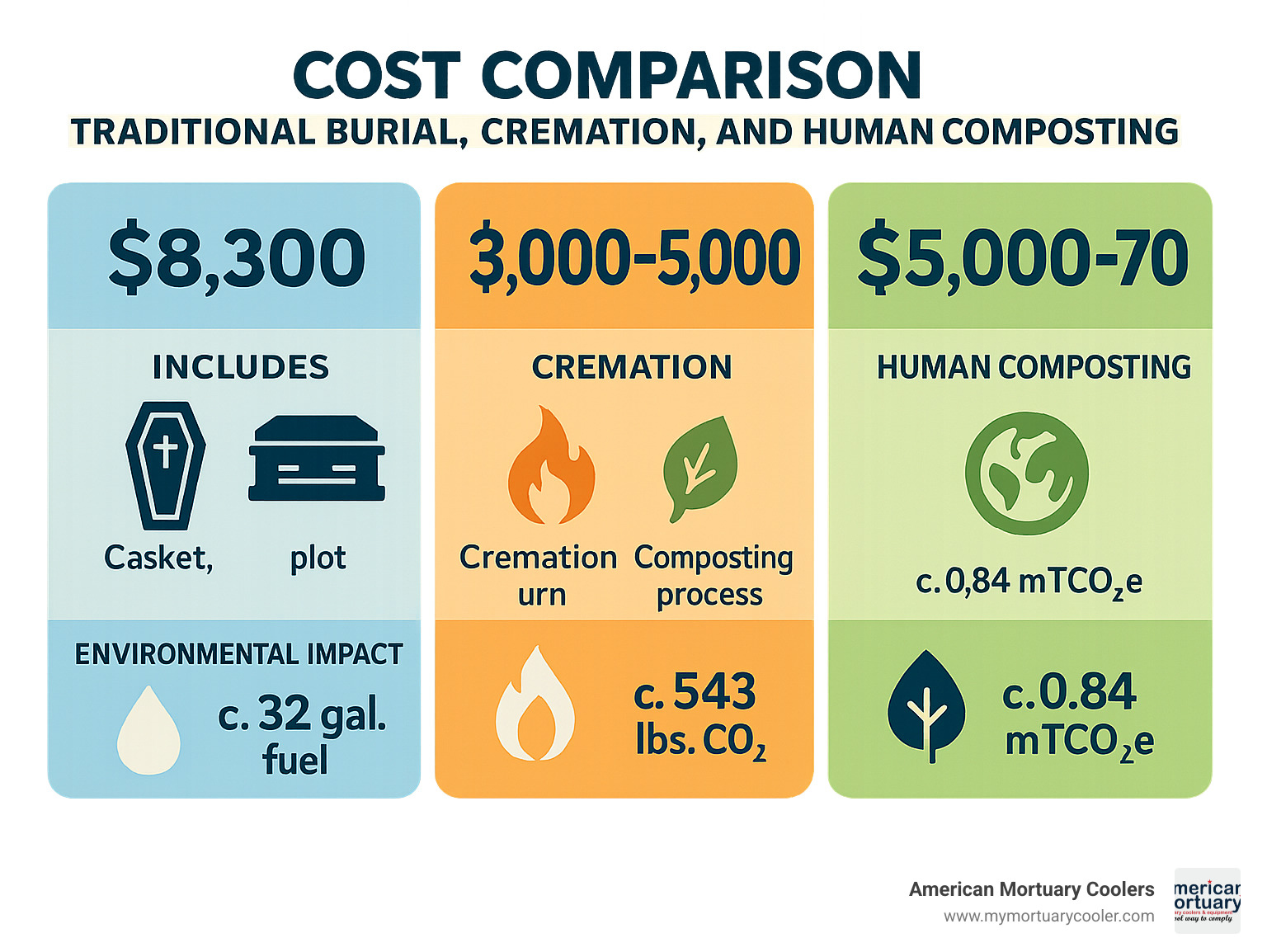
When it comes to affordability, human composting www.funeralcoolers.com sits comfortably between traditional options. The service typically costs between $5,000 and $7,000, making it more affordable than conventional burial (with a median cost of $8,300 in 2024) while somewhat higher than basic cremation services (averaging $3,000-$5,000).
What makes human composting particularly appealing to many families is its all-inclusive nature. Most packages cover body collection, transportation, temporary preservation in a mortuary cooler, the complete change process, soil return to the family, and all necessary documentation and permits.
A funeral director in Colorado recently shared with us: "My clients appreciate knowing exactly what they're paying for upfront. Unlike traditional burial where costs can snowball with plot purchases, vaults, and headstones, human composting offers more price transparency. Plus, families love that they're getting something meaningful in return – soil that can nurture new life."
Environmental Impact: The Numbers
The environmental benefits of choosing human composting www.funeralcoolers.com are truly remarkable:
Each person who chooses composting over conventional methods saves approximately one metric ton of carbon from entering our atmosphere. That's a significant contribution to fighting climate change from a single end-of-life decision.
The process is incredibly energy-efficient, using 87% less energy than conventional burial or cremation. This efficiency comes from working with natural processes rather than against them.
For families weighing their options, cremation's environmental footprint is worth considering. Each cremation releases over 600 pounds of CO₂ (equivalent to driving more than 600 miles), while human composting is essentially carbon neutral when powered by renewable energy.
Beyond carbon concerns, there's the issue of chemicals. Traditional embalming introduces formaldehyde and other preservatives that can eventually leach into soil and groundwater. Cremation can release mercury from dental fillings, which according to scientific research on mercury pollution, poses significant environmental risks even in small quantities.
"When I explain the environmental benefits to families," notes a Washington-based provider, "I often say that choosing human composting is like planting a tree that will grow for generations. Not only are you avoiding harm to the planet, but you're actively contributing to its renewal. That resonates deeply with people who've lived their lives with environmental values."
For funeral homes considering adding this service, the environmental benefits represent not just a selling point, but an opportunity to be part of a meaningful shift toward more sustainable death care practices – all while meeting the growing consumer demand for greener options.
Frequently Asked Questions about Human Composting www.funeralcoolers.com
When you're considering adding human composting www.funeralcoolers.com services to your funeral home offerings, you'll need thoughtful answers for the families you serve. I've gathered the questions I hear most often from funeral directors and their clients, along with honest, helpful responses.
Can families participate in or witness the human composting process?
Absolutely! Family involvement is one of the most meaningful aspects of this option. Most facilities welcome participation in several ways:
Many families find comfort in placing flowers or small biodegradable mementos alongside their loved one during the initial placement ceremony. Some write heartfelt messages on seed paper that will become part of the change.
"We had a family who brought their mother's favorite gardening gloves and trowel," a Washington facility manager told me. "They placed these items in the vessel along with wildflower seeds she had collected. It became a beautiful ritual that helped them begin their healing journey."
Facilities often provide viewing windows where families can witness parts of the process, similar to cremation witness options. And when the soil is ready, many families make collecting it a meaningful ceremony of its own – a final act of care and connection.
What happens if someone dies in a state where human composting isn't legal?
This is a common concern, but there are established pathways for families who choose human composting www.funeralcoolers.com while living in states where it's not yet legal.
Your funeral home can coordinate with facilities in legal states to arrange transport. The process requires specific permits and documentation, but experienced funeral directors handle these details smoothly. The key consideration is avoiding embalming, as most composting facilities cannot accept embalmed remains.
A provider in Colorado shared: "About 30% of our clients come from surrounding states. We've developed relationships with funeral homes across the region to make the process as seamless as possible for families. The extra step is worth it for those committed to this choice."
Are there any religious or cultural restrictions on human composting?
Religious perspectives vary widely. Some traditional religious authorities have expressed concerns, particularly those with specific burial customs. Others, especially those with environmental stewardship values, have acceptd the practice.
What I've noticed is that personal choice often transcends traditional boundaries. Many families blend elements from their spiritual traditions with this new option, creating meaningful hybrid ceremonies that honor both their beliefs and their environmental values.
As a funeral director, your sensitive guidance through these considerations can be invaluable to families navigating unfamiliar territory.
What can families do with the soil after the process?
The soil created through human composting www.funeralcoolers.com offers unique possibilities for continuing the story of a loved one's life. With approximately one cubic yard of nutrient-rich soil produced, families have plenty to work with.
Many use a portion to plant memorial trees or gardens at home. The soil has an ideal pH of 6.5-7, making it perfect for most plants. One family in Oregon planted their father's favorite rosebushes, creating a living memorial that blooms each year on his birthday.
For families without garden space, most facilities offer conservation donation programs. These partnerships allow the soil to nurture reforestation projects, restore damaged landscapes, or enrich community gardens.
Some families divide the soil among relatives across the country, creating a network of living memorials. Others combine it with traditional practices, perhaps keeping a small container of soil alongside an urn of ashes from a token cremation.
Legal Map for Human Composting www.funeralcoolers.com
The legal landscape continues to evolve rapidly, creating new opportunities for funeral homes across the country.
As of today, twelve states have legalized human composting www.funeralcoolers.com: Washington (the pioneer in 2019), Oregon, California, Colorado, Nevada, Arizona, New York, Vermont, Maine, Delaware, Maryland, and Minnesota. The momentum is building, with legislation pending in several other states.
For funeral homes in states where it's not yet legal, understanding interstate transport requirements is essential. Bodies must remain refrigerated during transport rather than embalmed, making proper mortuary coolers a critical component of your service offering.
American Mortuary Coolers has developed specialized transport solutions that maintain optimal temperatures while bodies travel between states, allowing you to honor your clients' wishes regardless of location.
Cost Breakdown for Human Composting www.funeralcoolers.com
When discussing costs with families, it helps to understand exactly what's included in a typical human composting www.funeralcoolers.com package.
Most services range from $5,000-$7,000, positioning them between traditional burial (median $8,300) and cremation ($3,000-$5,000). Standard packages typically include body collection, temporary cooling preservation, the complete composting process, soil processing, a basic container for a portion of the soil, and all necessary documentation.
Families may choose to add ceremonial services, custom containers for the soil, or participation in conservation programs. Many providers also offer prepayment plans, allowing people to secure current pricing while clearly documenting their wishes.
"Compared to traditional burial, our clients appreciate the transparency of our pricing," one provider explained to me. "There are fewer surprise add-ons like vaults, plots, and headstones that can drive up the final cost of conventional options."
What Happens to the Soil Afterward?
The soil created through human composting www.funeralcoolers.com is remarkably versatile, opening up meaningful possibilities that simply don't exist with other death care options.
Each body creates about one cubic yard of soil – enough to cover 100 square feet at a 3-inch depth. It's dark, rich, and alive with possibility. Many families tell me there's profound comfort in this change.
"My husband was a lifelong gardener," shared one woman from Washington. "Using his soil to plant his favorite Japanese maple in our yard feels right in a way I can't fully explain. It's not that he became the tree – it's that he's contributing to new life in a tangible way. I talk to him when I water it."
For those without garden space, donation programs offer beautiful alternatives. One facility maintains a dedicated conservation area where families can visit trees nourished by their loved ones' soil. Others partner with urban greening initiatives that restore city parks and neighborhoods.
While the soil is technically safe for any use, most providers suggest using it for ornamental rather than food-producing plants out of respect. When used on private property, families simply need the owner's permission. For public lands, permit requirements vary by location.
What makes this option so meaningful is the continuation of life's cycle – not an ending, but a change that nourishes new beginnings.
Conclusion
As the funeral industry evolves to meet changing consumer preferences and environmental concerns, human composting www.funeralcoolers.com represents a meaningful opportunity for forward-thinking funeral directors. This natural approach doesn't just provide families with an alternative to traditional methods – it answers the growing call for end-of-life options that honor both our loved ones and the planet they cherished.
Here at American Mortuary Coolers, we're passionate about supporting funeral homes across the contiguous United States as they accept this innovative path. Our Tennessee-based team crafts refrigeration solutions custom to your specific needs, whether you're just beginning to explore composting services or establishing a dedicated center.
From compact, efficient body boxes to comprehensive walk-in systems, we deliver durable, custom equipment right to your doorstep. We understand that proper temperature control isn't just a technical requirement – it's fundamental to providing dignified, respectful care during this meaningful transition.
The growing interest in human composting reflects something deeper than just environmental awareness. It speaks to a profound shift in how many people now view death – not as an ending, but as a natural return to the cycles that sustain all life. As one client beautifully shared with us, "Returning our bodies to the earth in a peaceful, gentle, natural process is one of the most powerful yet relaxing decisions we have ever made."
For funeral directors curious about how proper mortuary refrigeration can support your sustainable death care initiatives, we'd love to help you explore the possibilities. You can find more info about mortuary coolers on our website, or reach out directly to discuss your facility's unique needs.
By blending time-honored expertise in compassionate death care with innovative approaches like human composting www.funeralcoolers.com, your funeral home can offer families truly meaningful choices. Together, we can help create end-of-life experiences that honor both the individuals we've lost and the world they've left in our care.


